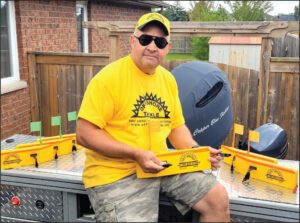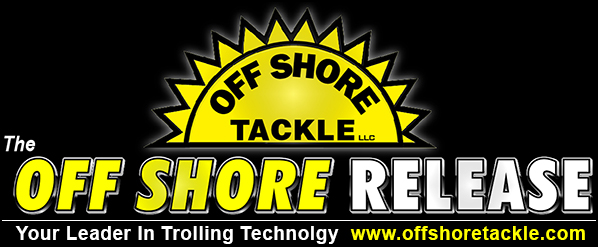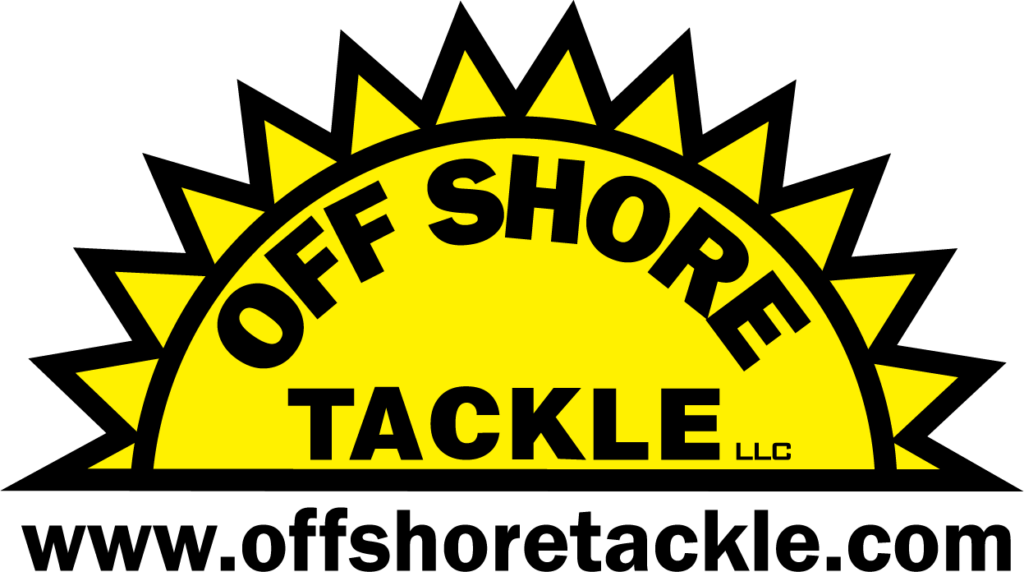BY CAPTAIN DAVE BOON,
COPPER BLUES FISHING

Mid-summer big water trolling on the open waters of lower Lake Huron demands that you cover much of the water column in this multi species fishery.
To accomplish this, I use Off Shore Tackle’s OR37 SST Pro Mag in-line planer boards, towing a variety of weighted lines including lead core, weighted steel and copper. I set up my Off Shore boards using the OR39 Sam’s Pro Release on the bracket and because I use monofilament backing, I use the OR16 Pro Clip on the tail of the board. If you are an angler that uses braided super lines as your backing, then it would be best to replace the OR16 Pro Clip with the OR18 Snapper Release to securely hold your braided line in place.
The beauty of running the OR39 on the bracket of the boards is the fact that you can adjust the amount of tension that it takes to “trip” the release. The set-screw on the release allows you to dial in just the right amount of tension for whatever fishing application or sea condition you are faced with. You can also factor in whether you want the release on the bracket to release at all. Some anglers prefer it doesn’t when they’re fighting fish. For me, I like to have the option to trip the release on the bracket at the time in the fight where I feel it’s most appropriate. To that end, I tighten the set screw first for the wave conditions so as not to get unwanted tripping and second so that a good snap of the rod tip will trip the board when I want it to.
When setting the boards in place it is imperative to make sure that your backing line is securely behind the pin on your OR16 Pro Clip on the tail of the board. This will ensure that the board will stay firmly attached to your line. Once the boards have been deployed, I use the rod holders along the vertical stanchions of my rocket launcher arch, which gives me ample spacing between rods.
I n normal conditions, I like to fly the board flags high and proud, but in rough, wavy conditions, I will lower the flags. It can easily happen that in wavy conditions where one board line could snag onto the flag of the board next to it. I’m happy to compromise a little visibility to lessen the chance of one board line tangling with another.
n normal conditions, I like to fly the board flags high and proud, but in rough, wavy conditions, I will lower the flags. It can easily happen that in wavy conditions where one board line could snag onto the flag of the board next to it. I’m happy to compromise a little visibility to lessen the chance of one board line tangling with another.
My typical summer spread might include three OR37 boards on one side towing 200, 300, 400 feet of weighted steel line, accomplishing depths of 40, 50, 60 feet respectively. On the other side, another three OR37 boards towing 6, 8, 10 colors of lead core accomplishing depths of 30, 40, 50 feet respectively.
The depths I suggest will vary, depending on speed etc., but generally allows me to cover the top 60 feet of the water column. I typically catch walleye in the top 40 – 50 feet of the water column. I like to run the deepest line closest to the boat and the shallowest the furthest away. This allows me to fight a hooked fish without having to clear or move any of my board lines.
An advantage of the OST boards for walleye is that even if the walleye hasn’t pulled drag from the reel, the board will easily fall back out of sync with the others, alerting me that there is a fish on.
The rainbows and salmon typically hit on the boards that are covering the 50 – 60 feet range, and they of course, will rock the Pro Mag boards backward with great force, screaming drag from the reel and ensuring that no one on board is dozing off!
In conclusion, the Off Shore Tackle OR37 SST Pro Mag boards give me the opportunity to present baits in stealth mode out away from the foot print of the boat and allow me to work much of the water column in this multi species fishery. Purpose Built, Performance Proven, Results Rendered!
Editor’s Note: Captain Dave Boon is a new face on the Off Shore Tackle Pro Staff. Based out of Ontario, Canada, Dave spends most of his time charter fishing Lake Huron for a wealth of species.


